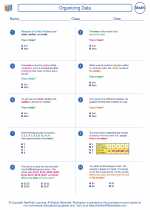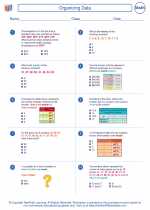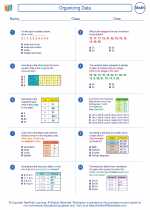Organizing Data -> cartesian coordinates
Cartesian Coordinates
Cartesian coordinates are used to locate points in a two-dimensional plane using a pair of numerical values, which are usually written as (x, y). This system was developed by René Descartes and is named after him. The x-value represents the horizontal position of the point, and the y-value represents the vertical position of the point.
Components of Cartesian Coordinates
When working with Cartesian coordinates, it's important to understand the key components:
- x-axis: The horizontal line on the plane, where the x-values are located.
- y-axis: The vertical line on the plane, where the y-values are located.
- Origin: The point where the x-axis and y-axis intersect, which is assigned the coordinates (0, 0).
- Quadrants: The plane is divided into four quadrants, labeled as I, II, III, and IV, moving counterclockwise from the top right quadrant.
Plotting Points
To plot a point using Cartesian coordinates, follow these steps:
- Start at the origin (0, 0).
- Move along the x-axis the number of units specified by the x-value.
- Move perpendicular to the x-axis, either up or down, the number of units specified by the y-value.
- The point where the two movements intersect is the location of the plotted point.
Distance Formula
The distance between two points in a Cartesian plane can be found using the distance formula:
√((x2 - x1)2 + (y2 - y1)2)
Study Guide
To study Cartesian coordinates effectively, consider the following tips:
- Practice plotting points on a graph and identifying their coordinates.
- Understand the relationship between the x-axis, y-axis, and quadrants.
- Memorize the distance formula and practice applying it to find distances between points.
- Work on real-world problems that involve using Cartesian coordinates to locate and measure distances between points.
Understanding Cartesian coordinates is crucial for various mathematical and scientific fields, including geometry, physics, and engineering. Mastering this concept can provide a strong foundation for more advanced topics in mathematics.
.◂Math Worksheets and Study Guides Seventh Grade. Organizing Data

 Worksheet/Answer key
Worksheet/Answer key
 Worksheet/Answer key
Worksheet/Answer key
 Worksheet/Answer key
Worksheet/Answer key
